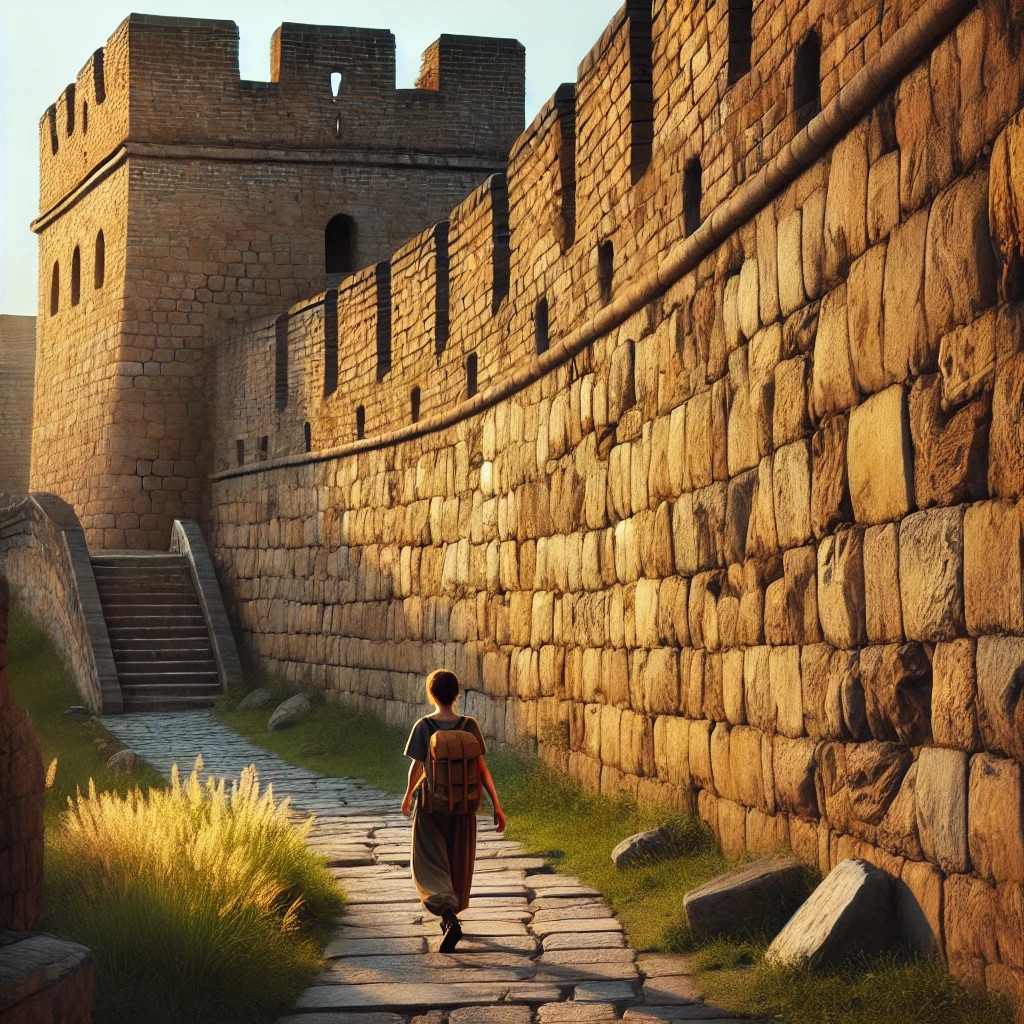ChatGPT:
Tarragona is a historic city located in the Catalonia region of northeastern Spain, along the Mediterranean coast. It is known for its rich Roman heritage, with well-preserved ruins that date back to when the city was an important Roman colony known as Tarraco. The city’s Roman past is evident in landmarks like the impressive Roman amphitheater, the ancient city walls, and the Roman Circus, which was used for chariot races.
Beyond its Roman history, Tarragona boasts a charming old town with narrow, winding streets, medieval buildings, and the stunning Tarragona Cathedral, which blends Romanesque and Gothic architectural styles. The city also offers beautiful beaches, such as Playa del Miracle, where visitors can enjoy the Mediterranean climate.
Tarragona is known for its lively festivals, particularly the Santa Tecla Festival, which is celebrated with traditional Catalan human towers (castells), parades, and fireworks. The local cuisine is another highlight, featuring seafood dishes like “romesco” and “suquet de peix,” and the city is part of the Cava wine-producing region, making it a great place to enjoy local wines.
Overall, Tarragona is a city where ancient history and modern life blend seamlessly, offering visitors a rich cultural experience with beautiful scenery and a relaxed Mediterranean atmosphere.
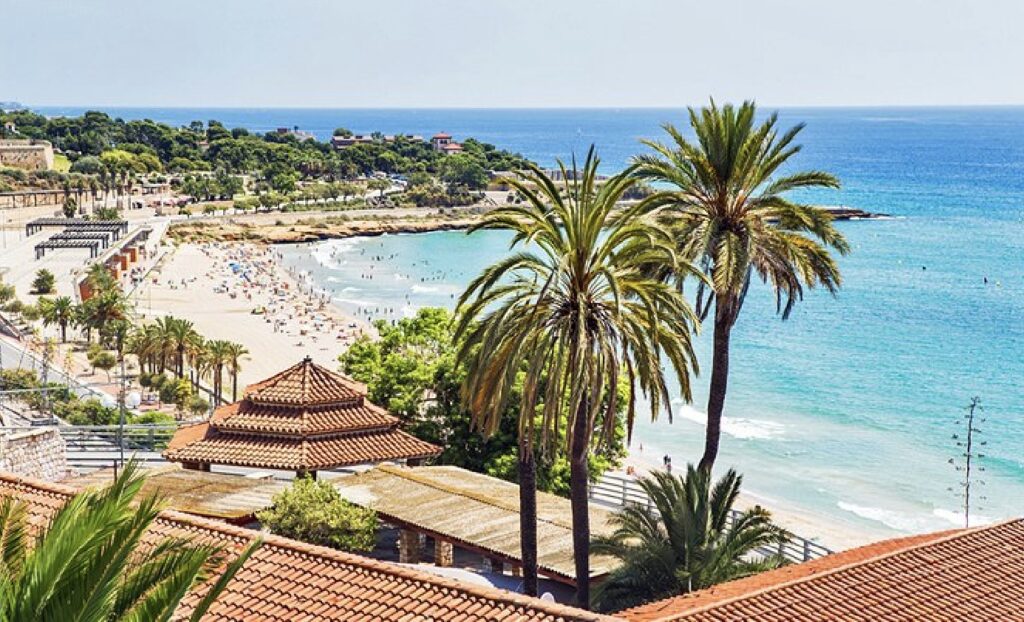
Origin
Tarragona’s origins trace back to ancient Iberian tribes who settled in the region long before it became part of the Roman Empire. The strategic location of Tarragona, perched on a hill overlooking the Mediterranean Sea, made it an attractive site for various civilizations, including the Phoenicians and the Greeks. However, it was during the Roman period that Tarragona began to flourish significantly.
Roman Era (218 BCE – 5th Century)
Tarragona, then known as Tarraco, was founded as a Roman military base in 218 BCE during the Second Punic War. It quickly became the capital of the Roman province of Hispania Citerior (later known as Hispania Tarraconensis), which encompassed a large portion of the Iberian Peninsula. Tarraco grew into a major urban center and port, becoming one of the most important cities in the Western Roman Empire.
The city’s prosperity during the Roman era is evident in its impressive architectural and engineering achievements. This period saw the construction of the Roman Forum, the amphitheater, the circus for chariot races, and an extensive network of roads and aqueducts. The city walls, some sections of which still stand today, were also built during this time. These structures highlight Tarragona’s importance as a political, military, and economic hub.
Medieval Period (5th – 15th Century)
After the fall of the Roman Empire in the 5th century, Tarragona, like much of the Western Mediterranean, experienced a period of decline and change. The city was sacked by the Visigoths and later fell under Moorish control in the early 8th century. During the Moorish period, Tarragona’s importance waned, and it became a smaller, fortified settlement.
In the 12th century, during the Reconquista, Tarragona was recaptured by Christian forces, specifically by the troops of the Count of Barcelona, Ramon Berenguer IV. The city was repopulated, and efforts were made to restore its former glory. The construction of the Tarragona Cathedral, which began in the 12th century and blended Romanesque and Gothic styles, marked a revival in the city’s religious and civic life. Tarragona became a key ecclesiastical center, with the archbishopric playing an important role in regional politics.
Modern Period (16th – 19th Century)
During the Renaissance and Baroque periods, Tarragona continued to develop, although it never regained the prominence it had enjoyed during the Roman era. The city’s economy was largely based on agriculture and trade, facilitated by its port. The walls and fortifications were strengthened during this period, especially during the War of the Spanish Succession in the early 18th century, reflecting the ongoing strategic importance of the city.
In the 19th century, Tarragona, like many Spanish cities, was affected by the Napoleonic Wars and later by the Carlist Wars. The city was bombarded and besieged several times, which caused significant damage. Despite these challenges, the 19th century also brought modernization, including the expansion of the port, improvements in infrastructure, and the arrival of the railway.
Contemporary Tarragona (20th Century – Present)
In the 20th century, Tarragona underwent further modernization and urbanization. The discovery of additional Roman ruins led to the development of the city as a major archaeological site, attracting scholars and tourists alike. In 2000, the archaeological ensemble of Tarraco was declared a UNESCO World Heritage Site, highlighting the city’s global cultural significance.
Today, Tarragona is a vibrant city that balances its rich historical legacy with modern development. It is a cultural and educational center, with a university that fosters research and innovation. The city has also developed a robust tourism industry, drawing visitors with its historical sites, Mediterranean beaches, and lively festivals.
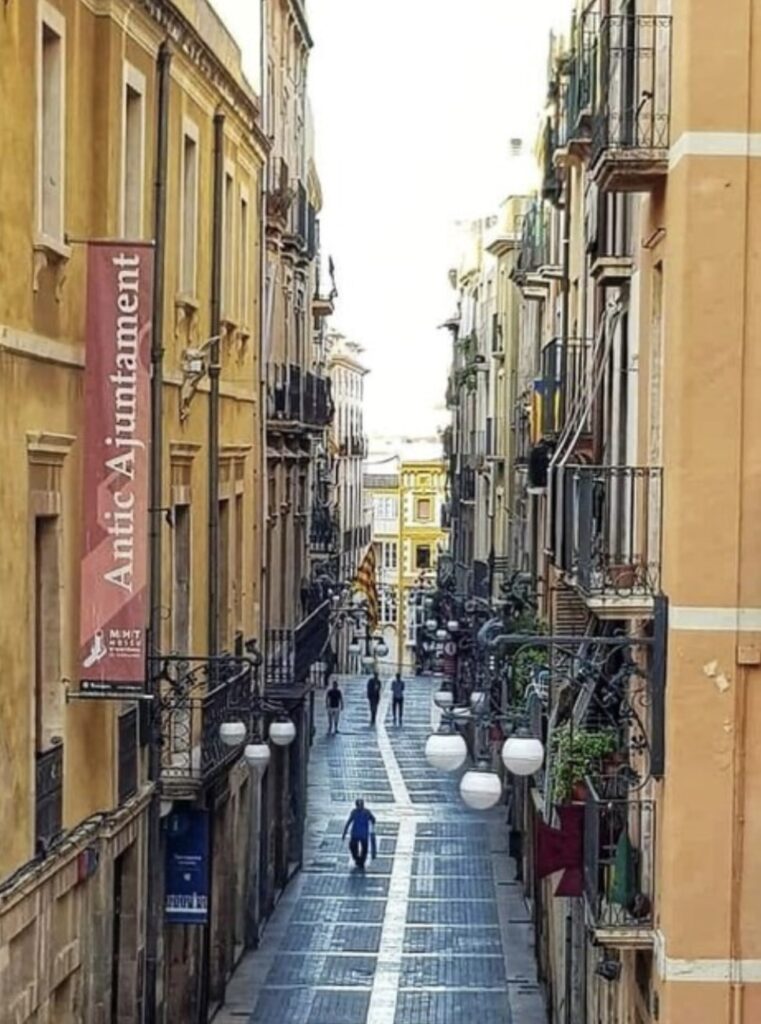
Tarragona continues to celebrate its Roman past while embracing its role as a modern, forward-looking city within Catalonia and Spain. The blend of ancient ruins, medieval charm, and contemporary life makes Tarragona a unique and dynamic place with a deep historical foundation.
Tarragona is rich in historical monuments and tourist attractions that reflect its Roman heritage, medieval history, and modern charm. Here’s a list of some of the most notable sites:
Roman Monuments
- Amphitheater of Tarragona: A well-preserved Roman amphitheater dating back to the 2nd century, used for gladiatorial contests and public spectacles. It is located by the sea, offering stunning views.
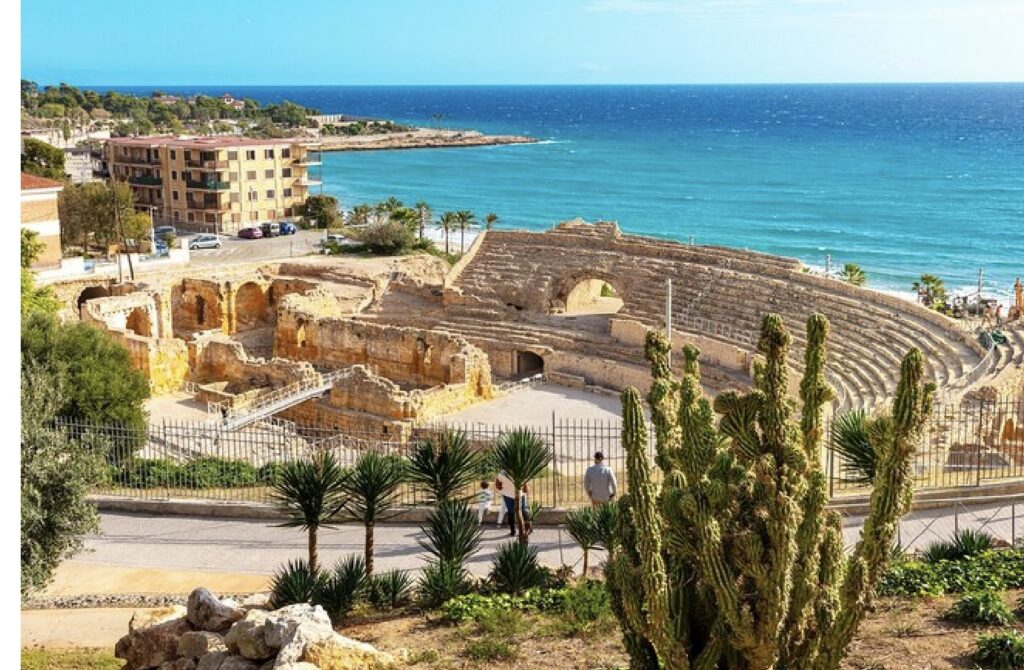
- Roman Circus: This ancient site was used for chariot races and could accommodate up to 30,000 spectators. Part of the structure is integrated into the modern city.
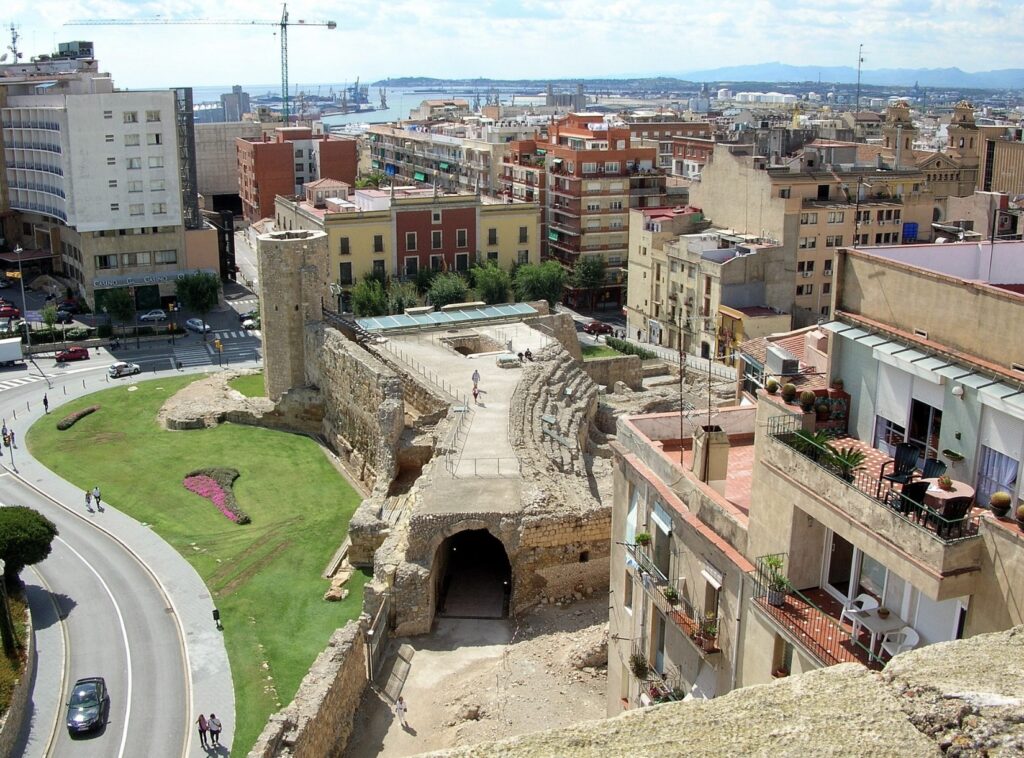
- Tarragona Roman Walls: The oldest Roman structure in the city, these walls were built in the 3rd century BCE. Visitors can walk along portions of the walls and see towers like the Tower of the Scipios.
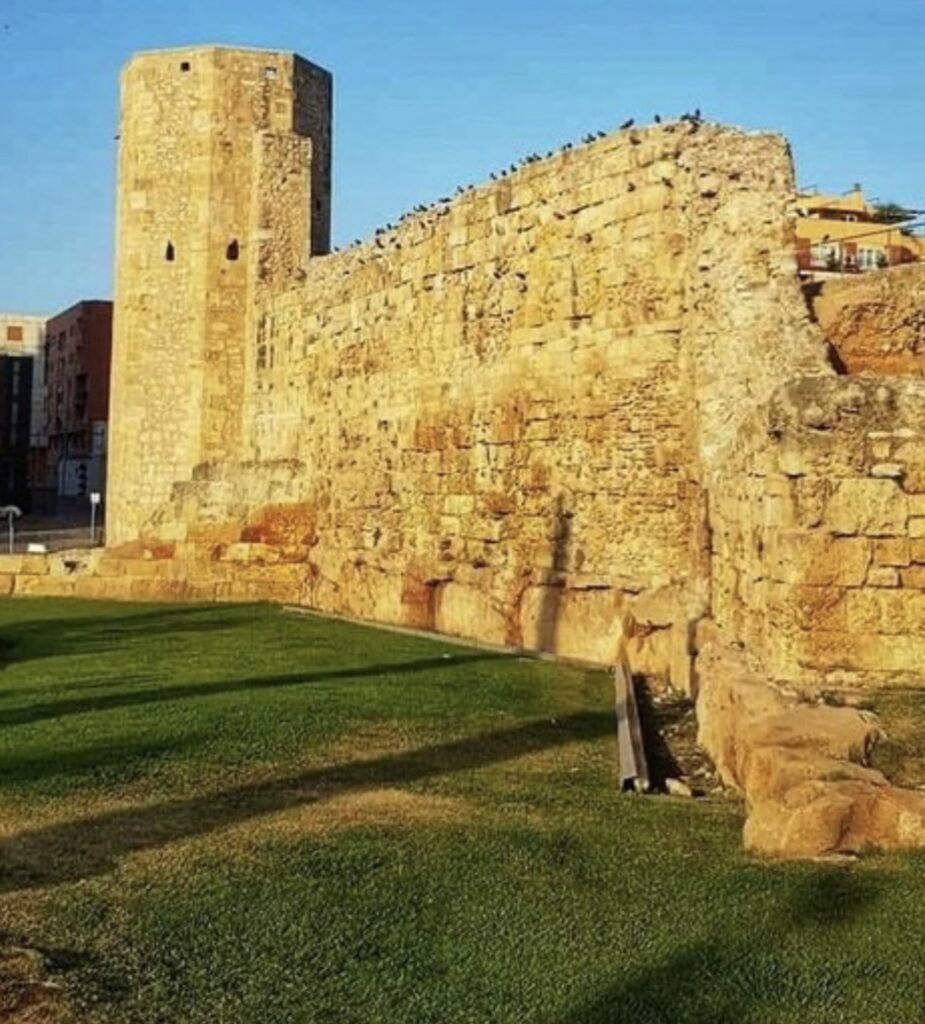
- Forum of Tarraco: The administrative and social center of the Roman city, this area contains remains of the basilica, temples, and other important buildings.
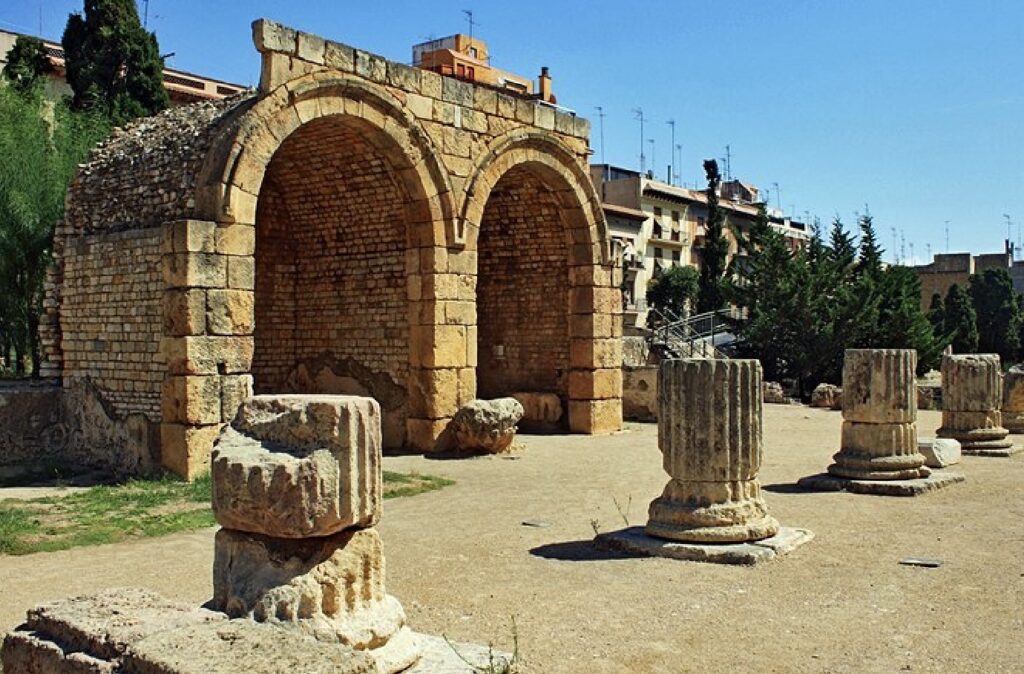
- Pont del Diable (Devil’s Bridge) / Les Ferreres Aqueduct: An impressive Roman aqueduct located just outside the city, it was built to supply water to ancient Tarraco.
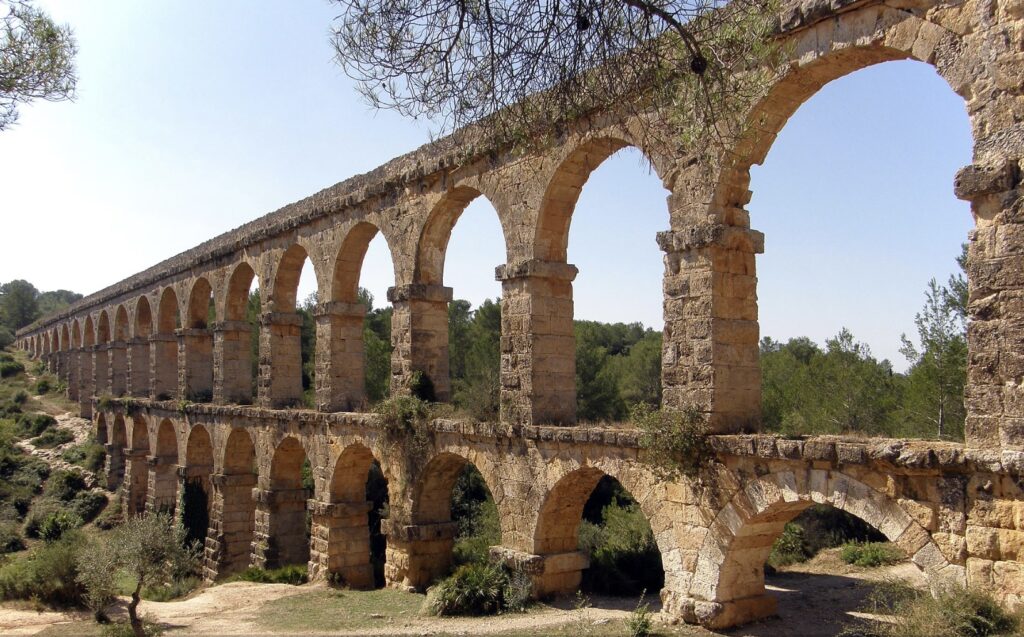
- Roman Theater: Located near the port, this ancient theater dates back to the 1st century BCE and was used for dramatic performances.
- Praetorium and Roman Circus Museum: A tower that was part of the provincial forum, now housing a museum that provides insights into the Roman circus and the history of Tarraco.
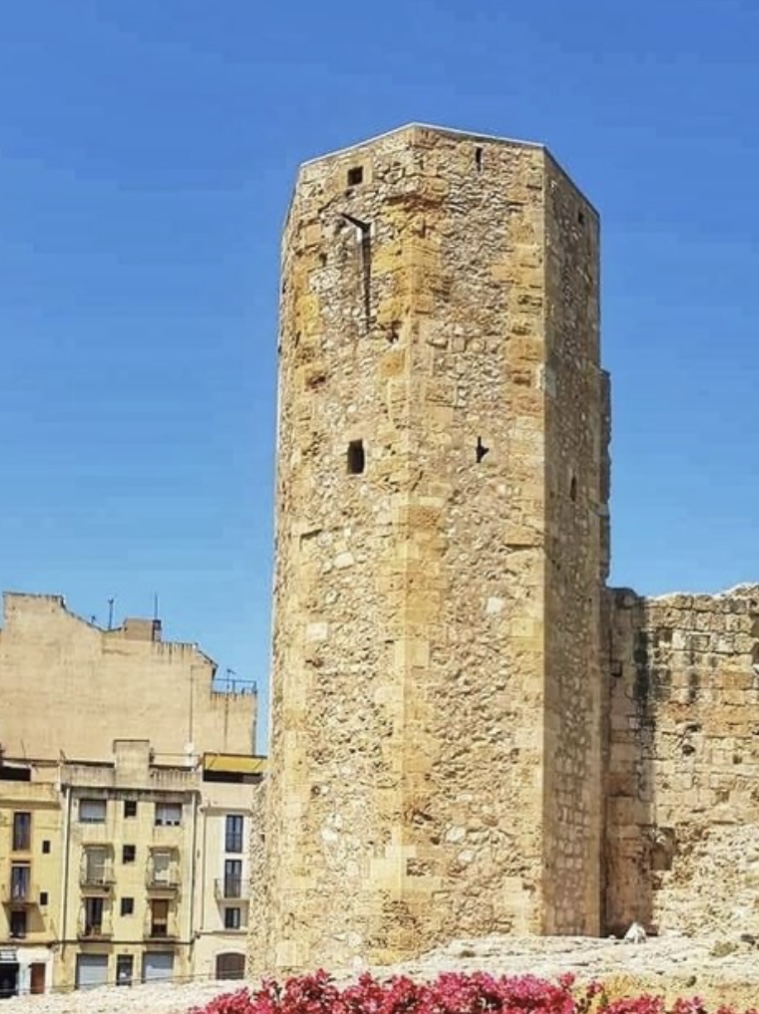
Medieval and Religious Sites
- Tarragona Cathedral: A magnificent cathedral with Romanesque and Gothic elements, it was built between the 12th and 14th centuries. The cloister and the Diocesan Museum are also worth visiting.
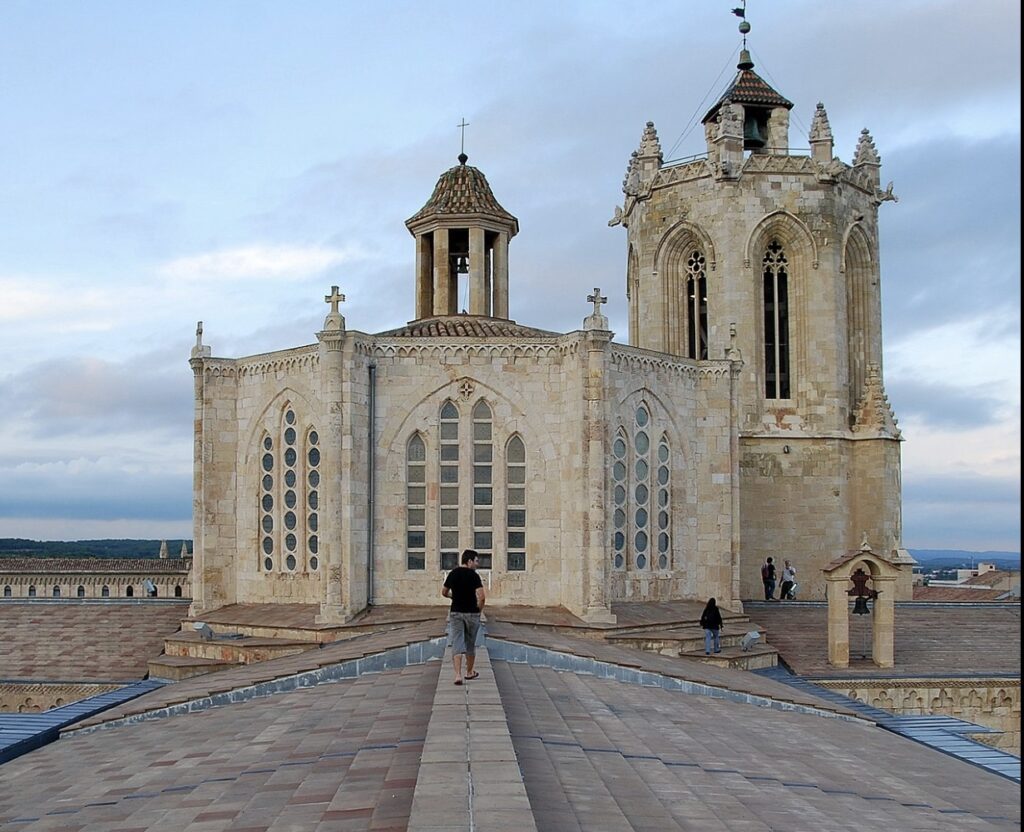
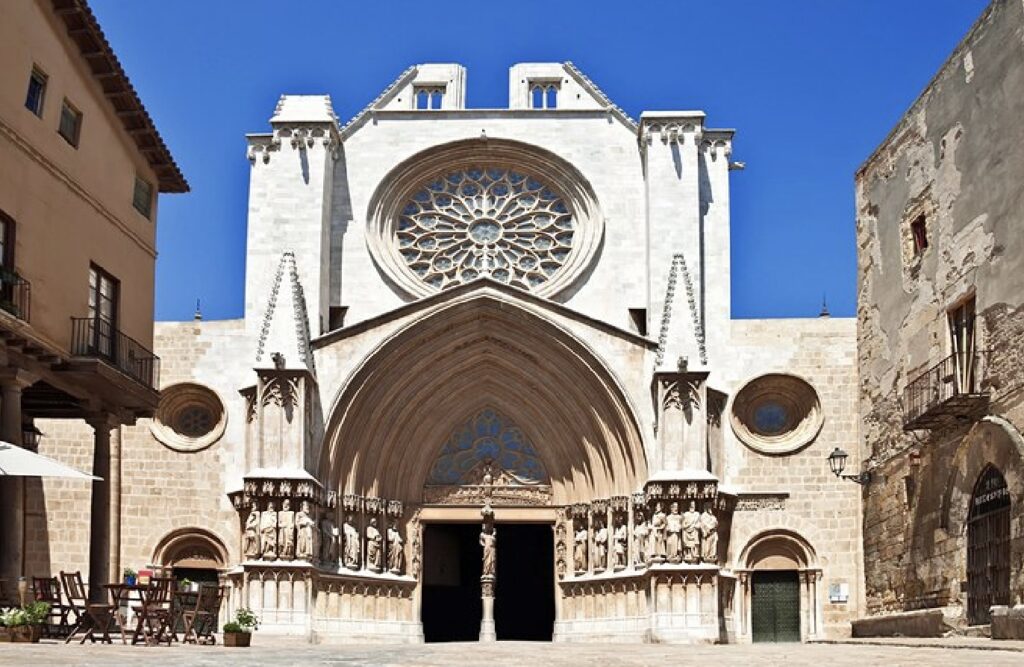
- The Royal Monastery of Santa Maria de Poblet: Located outside the city, this Cistercian monastery is a UNESCO World Heritage Site and one of the largest in Spain. It has a significant historical and architectural importance.

- Monastery of Santes Creus: Another Cistercian monastery, it is located near Tarragona and features Gothic architecture and royal tombs.
- Plaza del Rey (King’s Square): This square is home to the National Archaeological Museum of Tarragona and is surrounded by important medieval buildings.
Modern Attractions
- Balcony of the Mediterranean: A popular viewpoint at the end of the Rambla Nova, offering panoramic views of the Mediterranean Sea and the Roman Amphitheater.
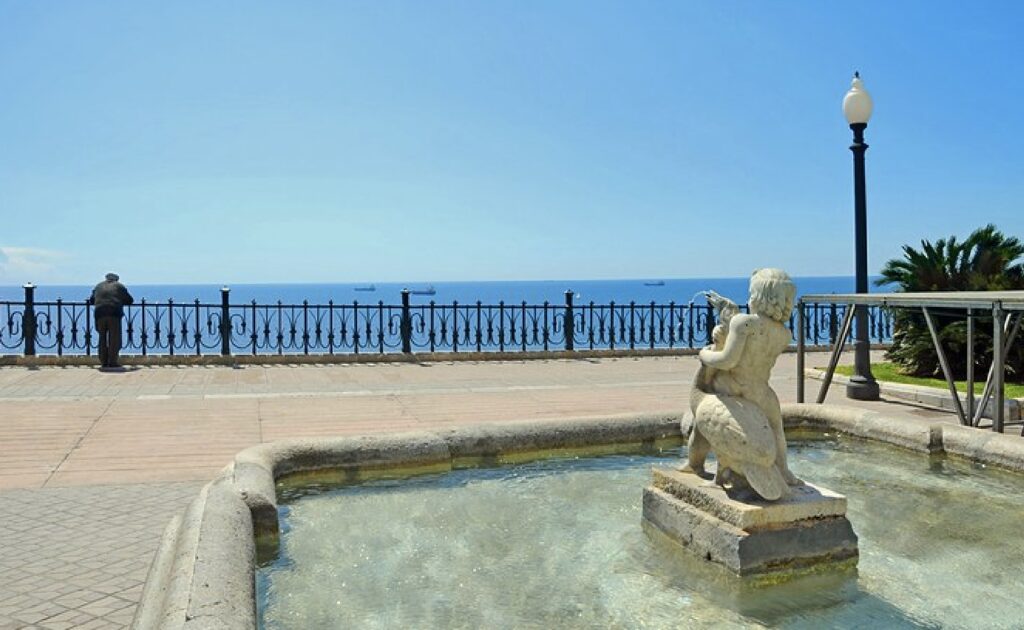
- Rambla Nova: The main promenade in Tarragona, lined with shops, restaurants, and cafes. It’s a great place for a leisurely stroll.
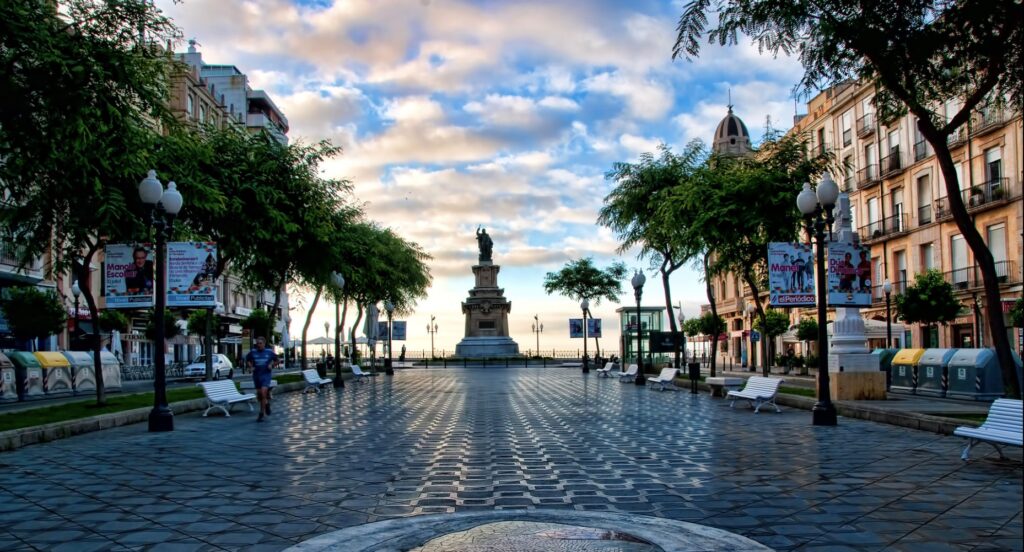
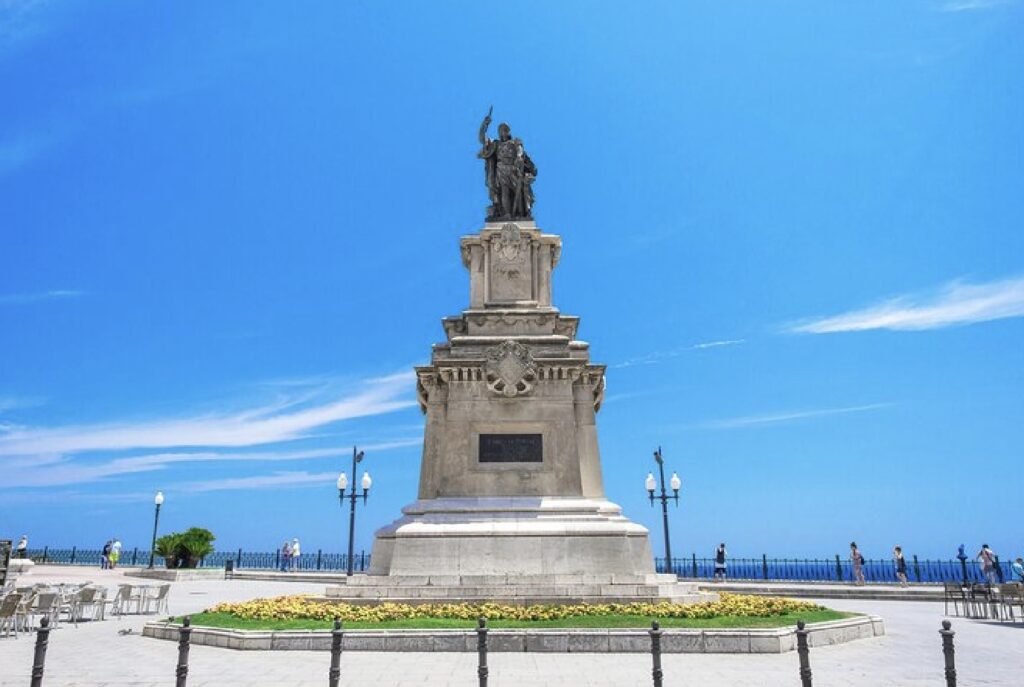
- PortAventura World: Located just outside Tarragona, this is one of Europe’s largest and most popular theme parks, offering rides and attractions for all ages.
- Moll de Costa: A revitalized area of the port with modern facilities, including restaurants, bars, and art exhibitions.
- El Serrallo: The traditional fishing district of Tarragona, known for its seafood restaurants and maritime atmosphere.
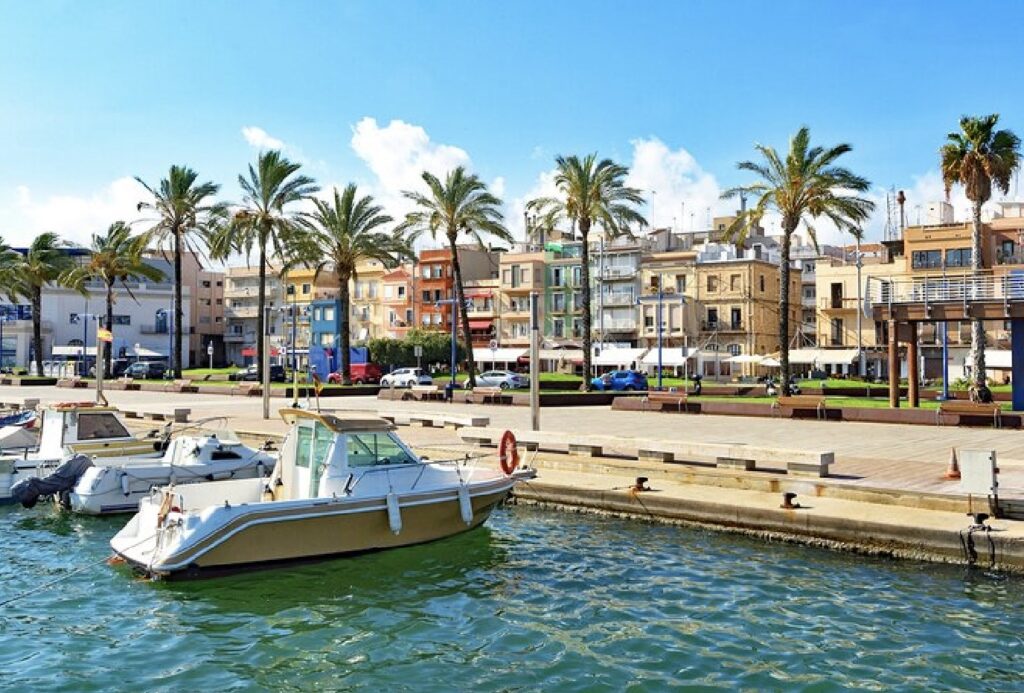
Festivals and Cultural Attractions
- Santa Tecla Festival: Held in September, this festival features traditional Catalan activities like castells (human towers), parades, and fireworks.
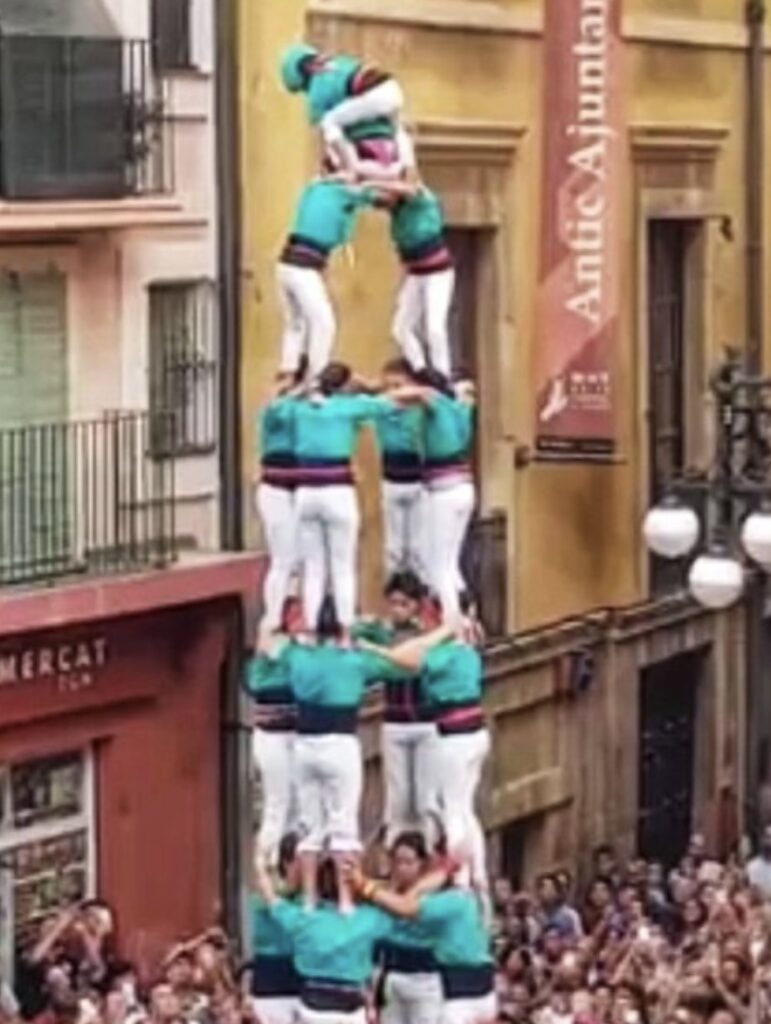
- National Archaeological Museum of Tarragona: Located in Plaza del Rey, this museum showcases artifacts from Tarragona’s Roman past, including sculptures, mosaics, and everyday objects.
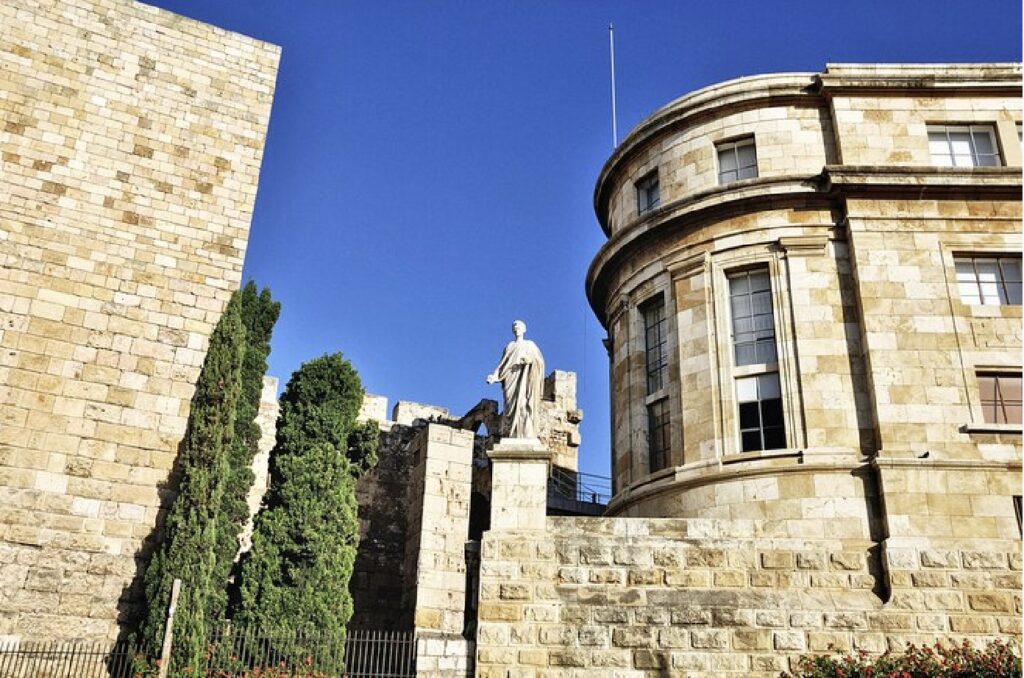
- Roman Villa of Centcelles: An archaeological site near Tarragona, this Roman villa is famous for its well-preserved mosaic dome.
Natural Attractions
- Playa del Miracle: The main city beach, located near the Roman Amphitheater, perfect for a relaxing day by the sea.
- L’Arrabassada Beach: Another popular beach, slightly further from the city center, known for its golden sand and clear waters.
- Parc Ecohistòric del Pont del Diable: Surrounding the Roman aqueduct, this park combines natural beauty with historical significance, offering walking trails and picnic areas.
These monuments and attractions provide a comprehensive look at Tarragona’s rich history, from its Roman origins to its modern-day culture, making it a diverse and engaging destination for visitors.
Here’s a one-day itinerary for exploring Tarragona, incorporating its rich history and local food specialties:
Morning
8:30 AM – Breakfast at a Local Café
- Start your day with a traditional Catalan breakfast at a local café in the old town (Part Alta). Try “pa amb tomàquet” (bread with tomato), topped with local ham or cheese, and a “café amb llet” (coffee with milk).
9:30 AM – Visit the Tarragona Cathedral
- Begin your exploration with a visit to the Tarragona Cathedral, located in the heart of the old town. Explore the stunning architecture, the serene cloister, and the Diocesan Museum, which houses religious art and artifacts.
10:30 AM – Explore the Roman Forum and Walls
- After the cathedral, take a short walk to the Roman Forum. Wander through the remains of ancient Tarraco’s political and social center. Then, walk along the Roman walls, which offer a glimpse into the city’s defensive past and provide scenic views of the surrounding area.
11:30 AM – Visit the Roman Amphitheater
- Head down towards the Mediterranean to visit the Roman Amphitheater. Marvel at this ancient site where gladiators once fought, and enjoy the stunning backdrop of the sea.
Lunch
1:00 PM – Lunch at a Local Restaurant
- Enjoy lunch at a traditional Tarragona restaurant like “El Llagut” or “Barquet,” both known for their seafood. Order a dish of “romesco,” a local specialty that’s a rich, nutty sauce served with grilled fish or seafood. Pair it with a glass of “Priorat” wine, produced in the nearby wine region.
Afternoon
2:30 PM – Stroll Along the Rambla Nova and Balcony of the Mediterranean
- After lunch, take a leisurely stroll along the Rambla Nova, Tarragona’s main promenade. Browse the shops, enjoy the atmosphere, and make your way to the Balcony of the Mediterranean, where you can take in breathtaking views of the sea and coastline.
3:30 PM – Visit the Roman Circus and Praetorium
- Head back towards the old town to visit the Roman Circus, where chariot races were held. Explore the underground passages and climb up the Praetorium tower for panoramic views of the city.
5:00 PM – Coffee and Dessert Break
- Take a break at a local café and enjoy a “crema catalana,” a traditional Catalan dessert similar to crème brûlée, with a caramelized sugar topping. Pair it with a strong “café solo” (espresso).
Evening
6:00 PM – Visit the El Serrallo Fishing District
- In the early evening, head to El Serrallo, Tarragona’s traditional fishing district. Stroll along the waterfront, and take in the maritime atmosphere, with fishing boats bobbing in the harbor.
7:00 PM – Dinner at a Seafood Restaurant
- For dinner, dine at one of the seafood restaurants in El Serrallo, such as “Can Boada” or “La Puda.” Try “suquet de peix,” a traditional Catalan fish stew, or “arrossejat,” a local rice dish similar to paella but made with toasted noodles.
8:30 PM – Enjoy the Evening Atmosphere
- After dinner, take a walk along the waterfront or return to the old town to experience Tarragona’s evening atmosphere. If it’s festival season, you might catch a traditional performance or live music in one of the squares.
10:00 PM – Nightcap at a Local Bar
- End your day with a nightcap at a local bar. Try a “vermut,” a popular local aperitif, or a glass of “Cava,” Catalonia’s famous sparkling wine.
This itinerary gives you a well-rounded experience of Tarragona’s historical sites and culinary delights, allowing you to savor the city’s unique blend of ancient and modern culture.
